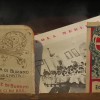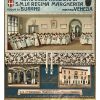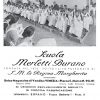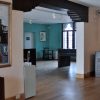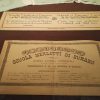At the end of the 19th century, under the patronage of Margherita of Savoy, enlightened aristocracy and policies elaborated a project to re-launch Venetian lace-making by opening schools: the first one in Burano in 1872, having found an elderly surviving woman teacher, then other ones in Venice, along the Coast, on the Mainland.
The decoration was taken from past repertories: all stylistic typologies were reproduced, often with higher technical precision in comparison to the originals, but renewals in the design, inspired by Art Nouveau and Déco, remained modest.
This activity continued for decades thanks to generous commissions on the part of Royalty and endowments by the Marcello family, but the general changes in fashion and diminished financial means bowled over by the Great War, the tendency to persist on iconographic models of the past, the very high cost of handmade products compared to industrial ones, competition with the many other centres sprouting up in Italy, would make every effort vain. After World War II, minor accessories and souvenirs were produced for a less élitarian tourism and schools and laboratories ceased to exist in the 1970s.
A decade later, however, the initiative of a Consortium endorsed by public and private bodies and the A. Marcello Foundation, led in 1981 to the inauguration of the School Museum, to a series of successful thematic exhibitions and to the organisation of theoretical-practical courses on the art of Venice and Burano lace-making, to avoid it being forgotten once again.
